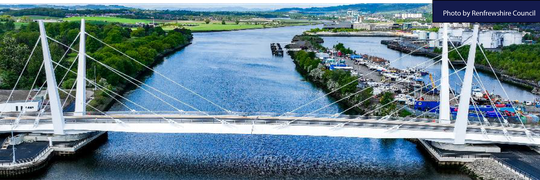Transport for London
London is one of the busiest urban areas in the world with an estimated 1 million commuters entering the city each day to add to the residential population.
London is one of the busiest urban areas in the world with an estimated 1 million commuters entering the city each day to add to the residential population. In addition to the Underground rail system, there is an extensive surface transport infrastructure. The whole network is the responsibility of Transport for London.
Understanding how the transport network performs and how people use it is key to Transport for London (TfL) running the network safely and efficiently. The challenge for TfL is to be able to accurately predict which parts of the network people use and how often. This can only be achieved by having real data about where people join the network, how they move through it and where they finish their journey. TfL does not have the survey capability within their organisation to carry out this data capture and needed a company with the experience, expertise, technology and capacity to carry out such a large project for them. Traditional methods such as roadside interview surveys and ANPR would be too costly and impractical.
The technology deployed for the 110 sites across London was a combination of Bluetooth detectors, Automated Traffic Counters (ATC) and video survey equipment. (Origin-Destination Surveys using Bluetooth detection) All the installations and maintenance were carried out overnight due to the high traffic volumes during the day but we were also able to do health checks on the equipment by remotely logging into the devices. Project management was a key factor to the success of the survey as all the equipment installation, maintenance and decommissioning had to run to a very tight schedule to ensure the efficiency and safety of the overall project were not compromised.
The fieldwork was backed by a team of experts from the Traffic and Data Services Division of Tracsis (as Sky High Technology at the time of the project) in the areas of survey design, planning, authorisation, software design, data processing and reporting. Raw data from the Bluetooth sensors was sense checked twice daily during the survey in terms of the volumes of devices detected by time of day and day of the week. Post-survey Bluetooth data was cleaned and validated using a variety of techniques to remove duplicate detections, for example, algorithms were used to correct for bias due to multiple devices in a vehicle. Over 32 million raw items of data were recorded resulting in 13 million valid site-to-site journey observations and 1.8 million unique routes observed; an incredible volume of data. A facility to import control count data was created and options to Furness the sample origin-destination matrices to these were made available.
The approach introduced to TfL by Traffic and Data Services allows data to be collected for longer time periods at a lower cost and with lower risk than traditional methods. The additional analysis provided beyond the scope of the brief allows a more detailed analysis of routing patterns and the open format of the data sets means the data can be mined further beyond the immediate requirements of the modelling project.
A ‘dashboard’ interface for analysing the data allows origin-destination matrices to be created for zones according to a range of statistical, temporal and site-specific filters. Analysis of vehicle routes is available at a variety of levels and includes tabular and map-based outputs. Data can be analysed in expanded or unexpanded form and allows complex data sets to be presented in an easily understood format supported with documented method statements.
Traffic and Data Services and TfL have proved that detailed surface transport surveys in complex urban environments can be carried out more effectively and efficiently than previously possible with older technologies. Although the technology made this possible it was the people that made it happen. Traffic and Data Services have gone on to deliver other transport surveys using the skills and experience of our people to improve the quality and reduce the cost of survey work.
This is just one project from case studies in transport surveys and data capture sector carried out by leading international provider Traffic and Data Services.



